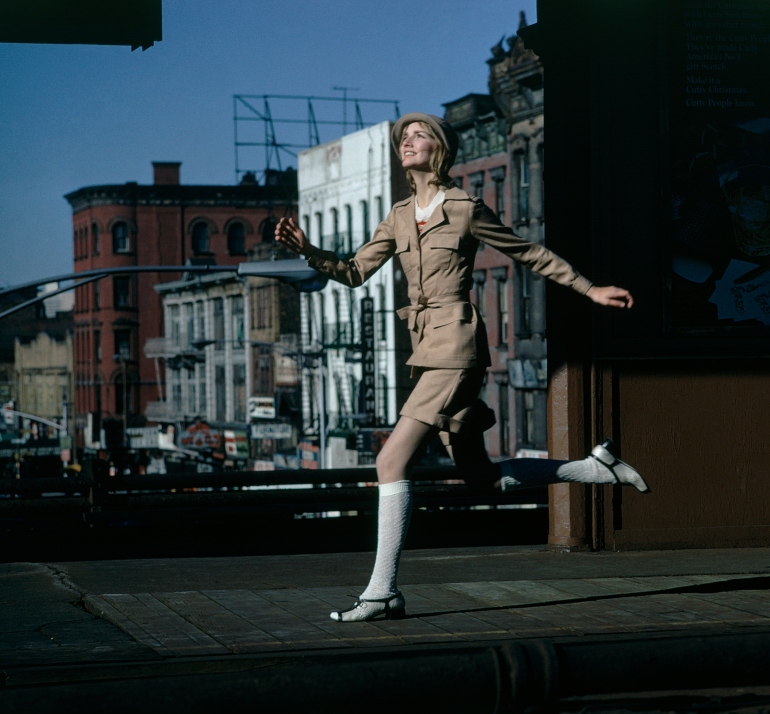Remembering a 1970s fashion impropriety – the Safari Suit

The Safari Suit has a long history, originally designed to be worn on African safaris, and other like adventures for famous people, such as Ernest Hemingway (author and adventurer), who had some specially designed in the 1950s. Other famous, or would be famous, film-makers, camera-men, writers and journalists adopted the casual, rugged look in pursuit of their creative, outdoor passion.
The suit has also been historically called the ‘bush jacket’and ‘field suit’ or ‘social oversight’ as in my case. Not surprising a version has military history when worn as a lighter uniform, for warmer climates. Its cotton-blend most comfortable in humid and hot conditions and, the inherent practicality of the four, front jacket pockets valuable. The military style short-sleeve jacket was traditionally worn long and belted, over a matching pair of wide comfortable shorts or trousers.

In the 1970s the suit was revised as a ‘must-have’ fashion for men, by a couple of trendy French designers. Roger Moore, in his famous James Bond role wore his designer Safari Suits in The Man with the Golden Gun, Moonraker and Octopussy, thus supporting this rugged outdoor fashion trend for men. Even India got on board when thousands of bureaucrats and corporate employees adopted the casual suit as office work wear.
Although a practical and useful outfit for a hot climate, the 1970 revival of the suit in Australia was not so rugged in appearance and was fashioned down to suit the casual Australian way of dress, in so much as it was made of material that did not need ironing or pressing and was sold in tan, beige and light coloured pastels. The jacket maintained the long-line, but the belt was dropped as were some of the jacket pockets. Some men even teamed this fashion boo-boo with chunky, platform shoes.
The Safari Suit was stylishly worn by the South Australian premier, Don Dunstan and the former prime minister, John Howard, during campaigning days, and in the early-’70s it was deemed a suitable dress attire in the Legislative Assembly, provided the jacket was worn over a shirt and tie. This casual suit also became the staple dress of every Australian salesman, waiting with flare, to pounce on potential customers entering their domain. It gained such status that even Prince Charles, famously wore his version of the suit on his visit to Uluru with Diana, the Princess of Wales, in 1983.

Although trendy, my image of the ’70s Safari Suit is thwarted by a vision of my father wearing one of his two polyester suits in the 1970s. Dad, an ex-army sergeant, slipped into this social oversight well, too well in my opinion. He retired from the army in 1968, and after wearing khaki green uniforms for more than 25 years, he was not comfortable wearing everyday civvies, let alone a stiff-two-piece suit, so finding a semi-formal comfortable suit was a blessing for him.
I suppose what drew him in was the military styling, a comforting memory. The suit did not need a belt, or a shirt underneath and the polyester material was a dream compared to his old, stiff cotton army greens. Initially Mum was delighted as his new attire did not need the heavy ironing and pressing his old army uniform did, she could just wash it and hang it out to dry. He purchased two polyester suits, one beige and the other pale blue, each was comfortably cut, with four (useless) pockets across the jacket front. It was short-sleeved and worn with a matching pair of loose flared trousers.
To my mind, the look was a little too casual, as I was so used to seeing him dressed in army uniforms that were pressed, polished and shiny. I know he loved the casualness of the style and he preferred the pale blue suit, which he naively matched it with his white bowling shoes and white socks. A fashion splendor he was not, more a fashion oddity.
He wore this pale blue fashion blunder to my sister’s wedding in 1985 and was still proudly making this fashion, faux pas in the early-’90s. He loved his Safari Suit and could not understand how the style and the polyester fabric could go out-of-date so soon. It took a lot of family pressure to stop him wearing this social transgression. Sadly, he must have hoped for another suit revival as he never threw them out just relegated them to the back of the wardrobe, waiting patiently with his white bowling shoes to be worn another day. In 2003, after his passing the suits were relinquished to the Good Samaritans as 1970 fancy dress attire.








 Proudly Australian owned and operated
Proudly Australian owned and operated